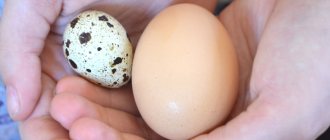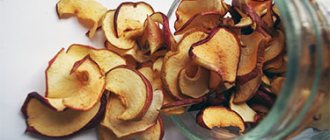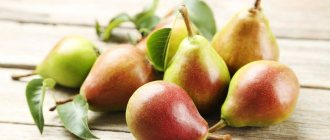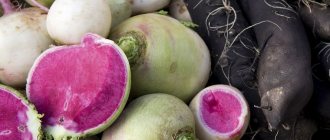Healthy eating means eating not only tasty and satisfying foods, but also healthy foods. Peas fully meet these requirements. This culture contains a number of elements valuable to the body, which determine its beneficial properties. Peas are recommended for all categories of people, especially useful for pregnant women. Despite its relatively high calorie content, it is widely used in dietary nutrition. There are also a number of contraindications in which the use of the culture is prohibited or limited.
Nutritional and energy value, composition
Content of nutrients in fresh green peas (BJU per 100 g of product):
- Proteins - 5.4 g;
- Fats - 0.4 g;
- Carbohydrates - 14.5 g.
The energy value of the product is 81 kcal (339 kJ).
Depending on the category of peas, the energy and nutritional value can vary:
| Type of peas | Calorie content (calorie content per 100 g) | BZHU content (grams per 100 g) |
| Dry (dried) | 297 | 20,4/2/53,4 |
| Boiled in water | 59,8 | 5,9/0/9,1 |
| Boiled in puree | 35,4 | 2,15/0,19/6,8 |
| Canned | 55,7 | 3,58/0,13/9,9 |
| Fried | 170 | 5,1/13/8,4 |
The culture includes a number of vitamins, each of which is important for the health and full development of the human body:
| Vitamin | Contents per 100 g of product |
| A (retinol) | 38 mcg |
| β-carotene | 449 mcg |
| B1 (thiamine) | 0.3 mg |
| B2 (riboflavin) | 0.1 mg |
| B3 (niacin) | 2.1 mg |
| B5 (pantothenic acid) | 0.1 mg |
| B6 (pyridoxine) | 0.2 mg |
| B9 (folacin) | 65 mcg |
| C (ascorbic acid) | 40 mg |
The product is also rich in minerals and trace elements necessary to maintain health:
| Element | Content (mg per 100 g of product) |
| Calcium | 25 |
| Iron | 1,5 |
| Magnesium | 33 |
| Phosphorus | 108 |
| Potassium | 244 |
| Zinc | 1,2 |
Due to its high protein content, peas are consumed by some categories of people as an alternative to meat, for example, vegetarians or believers during fasting.
Brain varieties of the plant are considered more tasty than table varieties. This is due to the increased content of starch and sugars. However, as brain peas ripen, the level of sugars in brain peas decreases.
Nutritional value and calorie content of boiled peas
The number of calories that can be contained in such a nutritious product worries many people. After all, in some cases you need to consume legumes in a certain quantity, so how many calories are in boiled peas?
This product has a unique composition; it contains many valuable substances in high content. Legumes also contain a lot of protein and carbohydrates, but they are extremely healthy.
The area of use of pea grains in cooking depends on the variety and maturity of the product. Sugar table types, which are canned and eaten raw, contain a small amount of calories. Boiled peas of shelled varieties have a higher calorie content. But it decreases after cooking the product. Therefore, dishes made from pea grains are considered an excellent component of dietary and sports nutrition. But when choosing a recipe, you must not forget that calorie content may vary depending on the cooking method. There are only 60 kcal per 100 grams of boiled peas. The calorie content of the finished dish also depends on the additional components added during or after cooking. Eating boiled peas in water without oil is the best option for diet and nutritional therapy.
Elements. Content in grams:
- Unsaturated fatty acids 1.3
- Saturated FA 0.2
- Ash 2.8
- Starch 45
- Dietary fiber 11
- Vitamins
Even after cooking, legumes retain all their beneficial properties, as well as a large amount of vitamins. The boiled product is rich in the following vitamins:
- B1 – 11%. Part of enzymes that are important for energy metabolism. It provides the body with energy and improves metabolism.
- Vitamin B5 – 15.6%. Participates in protein, fat and carbohydrate metabolism. It also promotes the absorption of amino acids and sugars and participates in the synthesis of certain hormones.
- Vitamin H – 13.2%. Takes part in fat synthesis and metabolism. Improves skin condition.
- Vitamin PP – 11.2%. It has a restorative effect and improves metabolism. Needed for the normal condition of the gastrointestinal tract and nervous system.
This vitamin composition for one product is unique; in addition, it also contains other useful substances.
Mineral composition
The level of mineral elements in pea grains is also quite high. Legumes contain: iron, cobalt, manganese, copper, calcium, phosphorus, selenium, fluorine and other substances.
Iron helps transport oxygen electrons and promotes oxidation and reduction reactions in the body. Manganese is involved in the formation of connective and bone tissues. Copper helps improve metabolism, digestion of proteins and carbohydrates.
Deficiency of all these minerals can lead to various health problems. Including, with a lack of certain elements, a person quickly gets tired, and disturbances in the digestive system are observed.
Product Nutrients
The carbohydrate content and calorie content of the product depends on the variety and growth conditions of the plant. How much boiled peas will be in also depends on how you cook it. The recipe for boiled peas is as follows:
Nutrient. Content in grams:
- Squirrels 23
- Fats 1.6
- Carbohydrates 48
These indicators correspond to the peeled variety. These raw boiled peas contain 299 kcal.
Beneficial features
The rich chemical composition determines the following beneficial properties of the product:
- removing excess fluid from the body, relieving swelling;
- combating the consequences of anemia;
- elimination of constipation, normalization of the functioning of the gastrointestinal tract;
- treatment of eczema and other skin diseases;
- lowering blood cholesterol levels;
- eliminating the risk of developing iodine deficiency in the fetus;
- prevention of asthma, elimination of complications during attacks;
- assistance in the treatment of oncology, tuberculosis;
- restoration of visual acuity, relieving eye fatigue;
- eliminating heartburn.
For men
Peas have a positive effect on the prostate. In turn, this has a beneficial effect on the functioning of the entire genitourinary system. Consumption of the culture can increase potency and stimulate sexual activity. Due to folic acid, it is possible to increase the number and quality of sperm.
Due to its nutritional value and satiety, the product is recommended for strength sports and heavy physical work.
Peas stimulate muscle function and accelerate the growth of muscle mass.
For women
One of the most important components of the product for women is folic acid. This element slows down the aging process of the body and is responsible for the normal condition and functioning of female organs.
Peas have a positive effect on the condition of the skin. This effect can be achieved through comprehensive cleansing of the body and solving various skin problems.
The product is able to saturate the body with vital hemoglobin. This is especially important during the menstrual cycle, when the content of this substance in the blood drops to critical levels.
Peas contain a large amount of vitamins, proteins and amino acids, which makes the product almost indispensable for expectant mothers. The culture allows you to normalize blood pressure and lower cholesterol levels.
Other beneficial properties for expectant mothers:
- Vitamin C helps strengthen the body's defenses;
- folic acid can significantly reduce the risk of developing fetal defects during pregnancy;
- Calcium contained in peas is necessary for the formation and strengthening of the baby’s skeletal system, as well as for improving the condition of the mother’s body.
The product helps you fall asleep more firmly and quickly, fights insomnia and sleep disorders, which are often found in pregnant women.
At the same time, peas belong to the category of heavy foods, as a result of which expectant mothers are not recommended to consume them in dry form. The culture must first be soaked in cool water and washed thoroughly - only after that it becomes suitable for consumption.
A few days before giving birth, expectant mothers should stop taking peas. This is due to the fact that the product causes increased gas formation in the intestines. For the same reason, peas are not recommended for consumption throughout the entire period of breastfeeding.
For children
In terms of protein content, peas are comparable to beef, which makes the product an important component of baby nutrition. At the same time, the protein contained in the culture is quickly absorbed by the child’s body.
Another important ingredient is thiamine. This substance has the following positive effects on the child’s body:
- activates the growth of the child;
- increases appetite;
- accelerates the development of the muscular system;
- saturates the body with energy.
Peas contain significant amounts of vitamin C, which helps strengthen the immune system and protect against respiratory diseases.
Pea porridge is especially useful for schoolchildren. Thanks to its use, it is possible to increase concentration, improve memory and vision.
Benefits of boiled peas for the body
The consumption of this legume has a beneficial effect on the functioning of the cardiovascular system. By adding peas to your diet, you can improve your health: normalize blood pressure and speed up your metabolism. Boiled split peas can fight high cholesterol levels in the blood. The product also has the following beneficial and medicinal properties:
- cleanses the intestines of waste and toxins;
- is an antioxidant;
- improves blood circulation;
- gives strength and energy.
Peas are an antioxidant and have a preventive effect, protecting against thyroid diseases and the occurrence of malignant tumors.
Composition of boiled peas
The product has a high content of high-quality protein, which is easily digestible. And how many vitamins boiled peas contain, many representatives of this family cannot compare with it. In addition, the product contains amino acids, fiber, and dietary fiber, which normalize the functioning of the digestive system.
Legumes have a large amount of vitamins: B, A, C, E, PP. As well as minerals, among them: potassium and calcium, selenium, cobalt, manganese and others. The boiled product contains starch, which is formed during the ripening of green peas, which is why green peas have a sweet taste, unlike split peas. The boiled product has beneficial properties, so it should be present in the diet of many people, including vegetarians; peas replace the vitamins that other people get from meat.
Useful and medicinal properties of boiled peas
When adding additional foods to your diet, you should consider what health benefits and harms they may bring. The beneficial properties of boiled peas are varied. The value of the product lies in its high protein content, comparable to meat. It also contains lysine, a rare amino acid that is a natural antiviral agent.
The product can be called anti-carcinogenic, as it contains selenium. Therefore, boiled split peas protect the body from the penetration of harmful substances and radiation. Legumes also have the properties of reducing the occurrence of cancer, heart attack and hypertension. One of the important possibilities is to resist the aging process of the skin and the human body as a whole.
The arginine content helps relieve spasms and improve blood circulation. Nicotinic acid contained in legumes helps normalize blood cholesterol levels. Fiber normalizes cholesterol levels, and thiamine has a positive effect on brain activity. In addition, boiled peas have low calorie content, but are a good product for gaining muscle mass. It is recommended for use by athletes. Legumes are good for men; they help get rid of prostatitis.
Rules for use and use in diets
In terms of its energy value, peas do not belong to the category of low-calorie products. Despite this, it has a number of beneficial properties that are important for people who are struggling with excess weight:
- cleanses the body of excess fluid, thereby reducing body volume and eliminating cellulite;
- does not accumulate in the body in the form of fat deposits;
- strengthens the muscle frame;
- removes waste and toxins.
The simplest way to lose weight is to soak dry peas in cold water for 12 hours and then grind them in a meat grinder. The resulting mass is consumed in several tablespoons throughout the day. The treatment course lasts 1-1.5 weeks. Upon completion, weight will decrease and intestinal functioning will return to normal.
When using the culture for dietary purposes, you should completely refrain from consuming salt and sugar.
The permissible intake of fresh peas is 200 g per day. The boiled product as part of various salads, cereals, etc. is not recommended to consume more than 100 g per day.
Dietary properties:
What calorie content does peas have, what dietary properties does it have? All this is of great interest to those who lead a healthy lifestyle and monitor their health and figure. So we will try to answer these questions in the next article.
So here it is:
Peas once had another name - “meat for the poor.” Moreover, he wore it completely deservedly, since its composition is similar to meat, and the vegetable proteins present in it are absorbed by the human body much faster than meat proteins.
The undoubted benefits of peas are due to the rich range of beneficial substances present in each pea. First of all, these are minerals such as calcium, potassium, magnesium, as well as their compounds.
In addition, it contains phosphorus and iron, iodine, proteins, carbohydrates, and a number of vitamins. During the ripening process, the sugar content decreases and the amount of starch increases.
Contraindications
In order not to cause harm to health, you should refrain from eating peas if you have the following diseases and problems with the body:
- individual intolerance to the product, allergic reactions;
- age under 3 years;
- old age (due to a weakened digestive system);
- lactation period;
- nephritis;
- cholecystitis;
- type 1 diabetes;
- thrombophlebitis.
For some diseases, the use of peas is not completely prohibited, but is significantly limited:
- For gout, you can eat boiled peas in small quantities.
- In case of pathologies of the kidneys and liver, the product is allowed to be eaten only in rare cases.
- Dry and boiled peas should be used with caution if there are disturbances in the functioning of the gastrointestinal tract associated with high acidity.
- For pancreatitis, you can eat a certain amount of sprouted peas. It is believed that the product in this form will benefit the patient. At the same time, the patient is prohibited from giving cereals, soups and other pea-based dishes.
During periods of exacerbation of gastritis, peas are prohibited for consumption in any form. During remission, you are allowed to eat a small amount of green peas or sprouted crops.
If you have chronic diseases, it is recommended to first discuss the possibility of consuming peas and products based on them with a qualified specialist.
Glycemic index
The ability of carbohydrates to increase blood sugar levels (hyperglycemia) is determined by the glycemic index. This term was first coined in 1976 as a result of a unique scientific study, the purpose of which was to create a list of foods that are ideal for patients with diabetes.
The glycemic index, or abbreviated as GI, is an indicator of the influence of the food eaten on changes in the level of glucose (sugar) in the blood. The glycemic index of glucose is taken as 100, and all food products rich in glucose have their own individual GI, which is compared with the GI of glucose and shows the rate of breakdown and absorption of carbohydrates by the body.
Table of slow carbohydrates (complex)
Porridge and flour products
| The product's name | Glycemic index | Carbohydrate content in g per 100 g. |
| Millet porridge | 69 | 26 |
| Oatmeal | 66 | 9 |
| Rye-wheat bread | 65 | 42 |
| Boiled white rice | 65 | 17 |
| Dumplings with cottage cheese | 60 | 37 |
| Durum wheat pasta | 50 | 27 |
| Barley porridge | 50 | 20 |
| Buckwheat | 50 | 29 |
| Boiled brown rice | 40-50 | 14 |
| Cellulose | 30 | 14 |
| Barley porridge | 22 | 22 |
| Soy flour | 15 | 21 |
Vegetables, greens
| The product's name | Glycemic index | Carbohydrate content in g per 100 g. |
| cucumbers | 20 | 6 |
| Dill | 15 | 4 |
| Spinach | 15 | 2 |
| Leek | 15 | 6,5 |
| Asparagus | 15 | 3 |
| Radish | 15 | 3 |
| Brussels sprouts | 15 | 6 |
| Olives | 15 | 9 |
| Bulgarian pepper | 10-15 | 5,5 |
| Leaf salad | 10 | 2 |
| Tomatoes | 10 | 4 |
| Bulb onions | 10 | 10 |
| White cabbage, broccoli | 10 | 4 |
| Parsley, basil | 5 | 8 |
Fruits, berries
| The product's name | Glycemic index | Carbohydrate content in g per 100 g. |
| A pineapple | 66 | 12 |
| Bananas | 60 | 21 |
| Persimmon | 55 | 13 |
| Cranberry | 45 | 4 |
| Grape | 40 | 16 |
| Tangerines | 40 | 8 |
| Gooseberry | 40 | 9 |
| Oranges | 35 | 8 |
| Pears | 34 | 9 |
| Strawberry | 32 | 6 |
| Peaches | 30 | 10 |
| Apples | 30 | 10 |
| Red Ribes | 30 | 7 |
| Sea buckthorn | 30 | 5 |
| Blackberry | 25 | 4 |
| Strawberries | 25 | 6 |
| Cherry plum | 25 | 6 |
| Grapefruit | 22 | 6,5 |
| Plums | 22 | 10 |
| Cherry | 22 | 10 |
| Cherries | 22 | 11 |
| Apricots | 20 | 9 |
| lemon | 20 | 3 |
| Black currant | 15 | 7 |
Dried fruits
| The product's name | Glycemic index | Carbohydrate content in g per 100 g. |
| Raisin | 65 | 66 |
| Figs | 35 | 58 |
| Dried apricots | 30 | 55 |
| Prunes | 25 | 60 |
Legumes
| The product's name | Glycemic index | Carbohydrate content in g per 100 g. |
| Fresh green peas | 50 | 22 |
| Beans | 40 | 8,1 |
| Lentils | 25-41 | 20 |
| Dry green peas | 25 | 13 |
| Beans | 15-27 | 4,4 |
Dairy
Cottage cheese, kefir, etc. are, of course, more protein products than carbohydrates, but due to their usefulness, we decided to include them in this table.
| The product's name | Glycemic index | Carbohydrate content in g per 100 g. |
| Milk of any fat content | 32 | 5 |
| Low-fat cottage cheese | 30 | 3,5 |
| Kefir 2.5% | 25 | 4 |











